The Ivy League of Collages - Eduardo Paolozzi at Berlinische Galerie
- Christian Hain
- Feb 28, 2018
- 4 min read
Updated: Mar 23, 2020
(Berlin.) After all these films, it’s time for some art again. The opening of Eduardo Paolozzi: Lots of Pictures – Lots of Fun at Berlinische Galerie took place already before Berlinale started. Scotland-born with Italian roots (as you might have guessed by the name), Paolozzi belonged to the first generation of European pop art, one of the first artists to take an interest in the aesthetics of mass culture. Berlinische starts his story with an almost complete recreation of the first gallery show in 1947 (Mayor, London). Quite obviously, Paolozzi had visited, and approved of, a Picasso show two years earlier. Seagull and Fish (1946), a Minotaur (or Bull actually, 1946), a primitive abacus with what you could identify as molluscs or tiny heads, &ct. Apart from, and just like, Cubism, these sculptures take inspiration from Primitivism (maybe a little bit Moore-ish too, from certain angles). A Horse’s Head could be sold for Dogon by a crooked antiques dealer. Several works are bronzes, the rest concrete; and this is the most original aspect about them: The material had yet rarely been used in art; associated with construction work, it opened the path to “proletarian chic“ interpretations, and “working class aesthetics”.
Studies for these and other sculptures, in ink and gouache, are astonishing works in their own right, but likewise influenced by the movements of the day.
Drawings and sculptures were an immediate success despite the then still obligatory protests, and the earnings enabled Paolozzi to seek inspiration abroad. After two formative years in Paris (1947-49) where personal contacts to American soldiers and the journals, magazines, and comic books they read, had an even bigger impact on his artistic development than meeting his idols Braque, Calder, and Giacometti, Paolozzi settled in London again, teaching, and co-founding the Independent Group together with, among others, future pop art legend Richard Hamilton.
Paolozzi still had to prove, that he was more than a Picasso clone. On a 1952 Group event, he presented his first “pop” collages (Blast “performance”), a medium he would pursue throughout his entire career. Paolozzi is sometimes cited as the inventor of the pop collage, but as with all these labels, you should take it with a pinch of salt. Were, for example, Schwitters’ collages of the 1920s fundamentally different (regularly using ads and typography, too)? Paolozzi would however explore the whole range, from typical 1960s Pop collages on the image of Hamilton’s Just What Is It That... to the later, more colourful, type, and several series of small formats you could almost call “classic”: The History of Nothing (1960), Constructional Probability Machine (1970). Both postcard-sized, one features photographs of actual sites, ancient architecture, with added technological imagery (mechanisms, machines, UFOs?!); the other crash test dummies and anatomical diagrams, almost surrealist. More or less abstract, very colourful or very reduced, Paolozzi’s collages are not easily categorized.
Come the Nineteen fifties, Eduardo Paolozzi decided to support his artistic career with a more stable side job, namely a design studio for wallpapers, textiles, and ceramics. The name Hammer Prints might have been inspired by Hammer Productions, the legendary film company (mid-20th Century’s The Asylum), but the style is very different indeed... We see a collection of screen-prints, abstract, red and black, green and black, blue and black, orange and black (only black and black is missing), more patterns are reminiscent of action painting.
Not to forget the sculptural work, from technical: a gearwheel in “liquid” “silver”, puddles of “gold”...-coloured steel or bronze to toy sculptures: a silver comic-y dog, a multi-coloured parking meter(?). Also silver barrens (or: Lego pieces, or: chocolate bars) coined “100% F*ART”, 1971 (-> Piero Manzoni?) and actually from less precious metal. Eventually Paolozzi would create large sculptures, hybrids between prehistoric/primitive idols and tomorrow’s man-machines. Human/-oid Heads are a recurring motive regardless of media, most abstract or plain figurative, primitive or futurist, “androidical”. (Occasionally you wonder, how much Paolozzi was looking back to Futurism, on top of all other influences.)
On paper again, a self referential joke, “dissing” the US (Pop Art) scene: Pop Art Redefined (Lots of Pictures, Lots of Fun), 1971, initially the cover of a magazine. Starring Andy’s Campbell can, Jasper’s flag, Disney’s Dumbo, and more.
Eduardo Paolozzi was a hugely versatile artist. Some (more) of his works can feel cold, academic, impersonal, sober, yet it would be hard not to find anything to your liking. Decoration, design, advertizing, comic strips, it’s all there, and art dominates the pop. (Early pop art actually took one step back from the Duchampian readymade, before both became closer connected again. Show the world as it is and declare it art –> Take parts of the commercial world as it is, and transfer them to art in a collage –> Recreate commercial objects of the real world -> &ct.)
If anything, the show helps you to understand how much Jeff Koons is a traditional Pop artist (just look at that dog!).
Like the new show at Stoschek’s - of which you will read shortly -, this one was in London (at Whitechapel Gallery) first, before moving on to Berlin. The artist lived in both cities, and left his traces in the public space. In and around Berlin, it’s a fountain here, a mural there – the one in Kurfürstenstrasse has only recently been rediscovered during construction works (involving concrete...). It will be covered by a wall again shortly, but now there’s a reproduction at Berlinische Gallery.
Eduardo Paolozzi, 09 February-28 May 2018, Berlinische Galerie
World of Arts Magazine - Contemporary Art Criticism

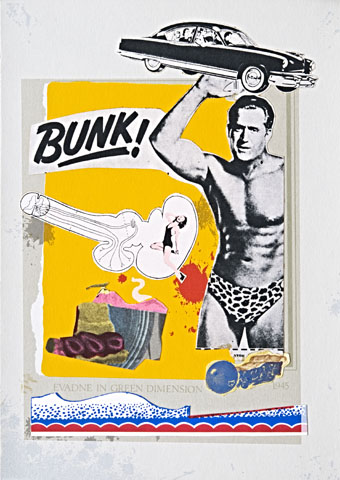

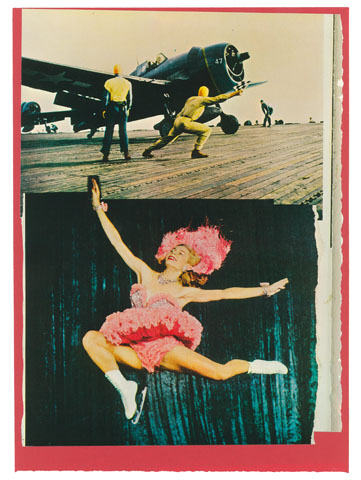

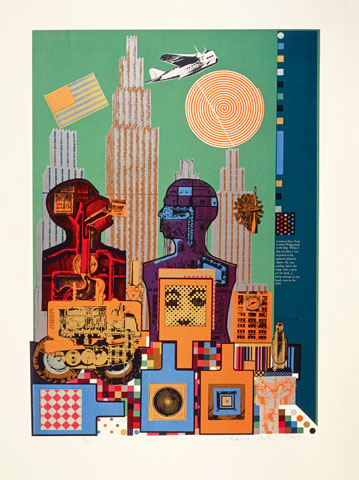

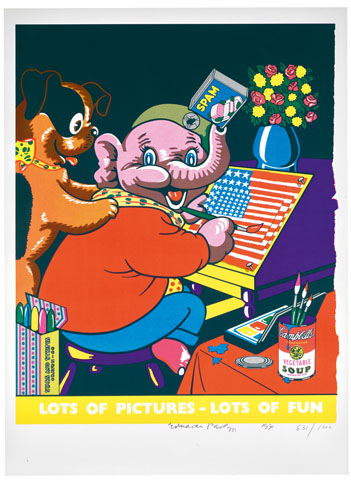

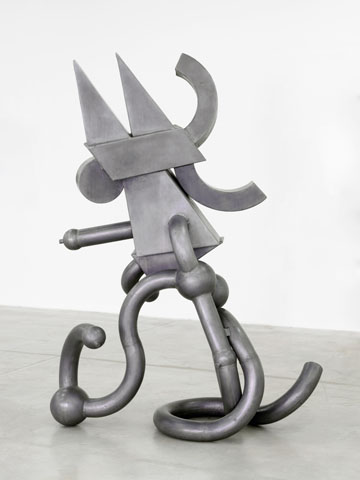
Comments